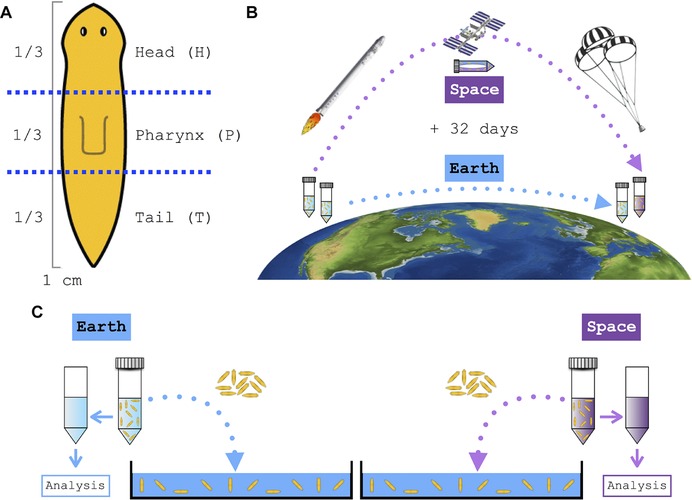Figure 2.

Flatworm amputation and space‐exposed and Earth‐bound worm sample schematics. (A) Approximately a third of the anterior part of the worm was cut off to create the head (H) fragment; then the posterior half was cut in half to create the pharynx (P) and tail (T) fragments, respectively. A total of 15 flatworms were cut and collected into three separate 50 mL conical tubes per fragment. (B) An identical number of worm samples, both whole and amputated fragments, were either sent into space or left on Earth for 32 days. (C) Immediately upon return to Earth, both space‐exposed and Earth‐only control worms from each sample tube were transferred to a Petri dish containing fresh Poland Spring water individually to identify any phenotypic changes
